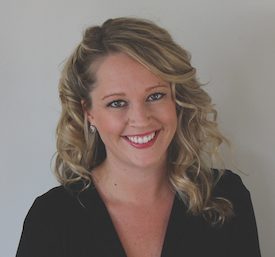Tuesday marks exactly one year since the U.S Department of Housing and Urban Development implemented HECM program changes in a move that took lenders by surprise and drastically impacted the reverse mortgage business.
It’s been a rocky year for the industry has originators attempted to adjust to the new normal, and it seems no one got out unscathed.
Lenders across the board saw their business drop. Shockingly, the lender that fared the best lost nearly a quarter of its volume. Industry wide, endorsement totals hit a low the space hasn’t seen in 13 years.
When the changes – which included a reduction in principal limit factors and adjustments to mortgage insurance premiums – were first announced, players in the space were less than pleased.
Some said fewer borrowers were going to qualify. Some said the product’s benefit in financial planning was no longer as impressive. Some said they were going to have to work a lot harder now, and they were probably going to make a lot less money.
Were they right? Now that the 10/2 changes are firmly in the rearview, how did the industry fare?
A slow recovery
“It was very damaging to the industry, particularly in the short term,” said John Lunde, president of Reverse Market Insight.
“It was comfortably the most disruptive set of changes at one time the industry has ever dealt with, including Financial Assessment,” continued Lunde, referring to a set of guidelines adopted in 2014 that required reverse borrowers to undergo a credit history and analysis in order to qualify.
Reza Jahangiri, CEO of American Advisors Group, agreed.
“There’s no question that, in the short term, the 10/2 changes had a bigger impact on the HECM market than Financial Assessment,” Jahangiri said.
David Peskin, president of Reverse Mortgage Funding, said the element of surprise made the adjustment tougher.
“If we knew in advance, I think the industry would have been better prepared to adjust,” said Peskin, admitting that the impact would have been significant no matter what.
“It was basically a trifecta: lower PLFs, increase to the upfront MIP for low-utilized loans and the removal of the interest rate floor,” he said. “Each of these changes have a big impact on their own.”
Lunde, whose data analytics firm monitors HECM volume, said the pace of recovery will be slow.
“It will take another two-plus years to recover to pre-10/2 HECM volume levels, judging by past product changes,” Lunde said. “That assumes we don’t have further significant changes to the HECM in the meantime, which would be the exception for that long of a time period judging by recent history.”
More change ahead?
The reverse mortgage industry has notoriously weathered constant program changes from HUD that have caused repeated setbacks for lenders in the space. And it seems more may be on the horizon.
On Monday, FHA Commissioner Brian Montgomery said the 10/2 guidelines only addressed part of the program’s problem, which is its negative impact to the tune of $14.5 billion on the Mutual Mortgage Insurance Fund.
“I can tell you that the changes FHA made to the principal limit factors and the adjustments to the HECM insurance premium we instated in 2017 were designed to help, but did not – and were not intended to – and will not fully solve the financial volatility of the program,” he said.
Montgomery said the agency is looking at issuing another HECM program change soon, but he failed to elaborate on what this might entail.
In November, the agency will issue a report to Congress on the health of the program, and with that may come an announcement of further changes.
Peskin said that he’s confident in HUD’s decision-making, even though last year’s changes were a “bump in the road.”
“I do believe that HUD is actively looking to ensure the longevity of this program, and if it took a major shake-up like this to allow them ample time to fix the program once and for all, it is well worth it,” Peskin said.
An impetus for innovation
Until the industry learns more from HUD, it continues to chug along, finding hope in recent data from RMI showing the worst of the 10/2 effects may be over.
Also providing some hope is the number of proprietary reverse mortgage products that have hit the market as of late, with some calling it the one good thing to emerge out of an otherwise tough year for business.
In 2018, reverse lenders introduced three non-agency jumbo products, and Finance of America Reverse released two new iterations of its existing jumbo loan.
“The bright spot is proprietary product innovation – no denying it,” said Peskin, whose company was among those that released a proprietary product this year. “The non-agency market will continue to grow as more and more companies create product and investor appetite grows.”
“Proprietary product innovation will fuel the growth of the industry,” Peskin added. “We need other mechanisms than just the HECM to help satisfy today’s customer.”
Lunde said the development of a strong proprietary market is a healthy step for lenders because it will curtail their dependence on FHA’s product, but warns it might also come with some issues if its own.
“Product innovation will slowly open up new customer use cases for the industry, although it will create more volatility in product offerings, guidelines and availability in the next housing/economic cycle,” Lunde said.
Jahangiri said ultimately, the changes forced lenders to think outside the box.
His company, AAG, announced a complete rebrand in the wake of 10/2, positioning itself as a holistic provider of home equity solutions.
The No. 1 lender in the space by a long shot, AAG moved away from offering just reverse mortgage loans, bringing on other products that include traditional mortgage loans and real estate services to cater to seniors looking to access their equity as they retire.
“On the upside, [the 10/2 changes] forced the industry to evolve its business model to include more proprietary innovation and multi-product distribution,” Jahangiri said.
Lunde agreed that the 10/2 changes forced the industry to get creative and said this is a positive for consumers.
“The industry has evolved to more of a product-agnostic approach, offering reverse mortgages alongside other home equity solutions, which is good for the customer,” Lunde said.
But part of the industry’s bid to recover has been to encourage forward originators to fold the product into their offerings. Lunde said it remains to be seen how this will impact the product, which comes with a rather detailed and lengthy origination process that has traditionally been left to those whose business is reverse-specific.
“The other side of this coin is that the industry is more focused on figuring out how to attract loans from originators not solely focused on reverse,” Lunde points out. “This could be positive, but only time will tell as there are potential pitfalls there as well.”
Peskin said that while the year has been rough, it’s important for the industry to focus on the positive.
“We should continue to think positively and understand other bright spots,” Peskin said. “More and more financial advisors are becoming reverse mortgage product evangelists, and that is amazing. We need these trusted advisors to understand the best ways to draw down on equity. The demographics speak for themselves and the Boomers need equity.”
“We have a big, bright future ahead,” Peskin added, “It just may take longer to get there than we initially hoped.”







